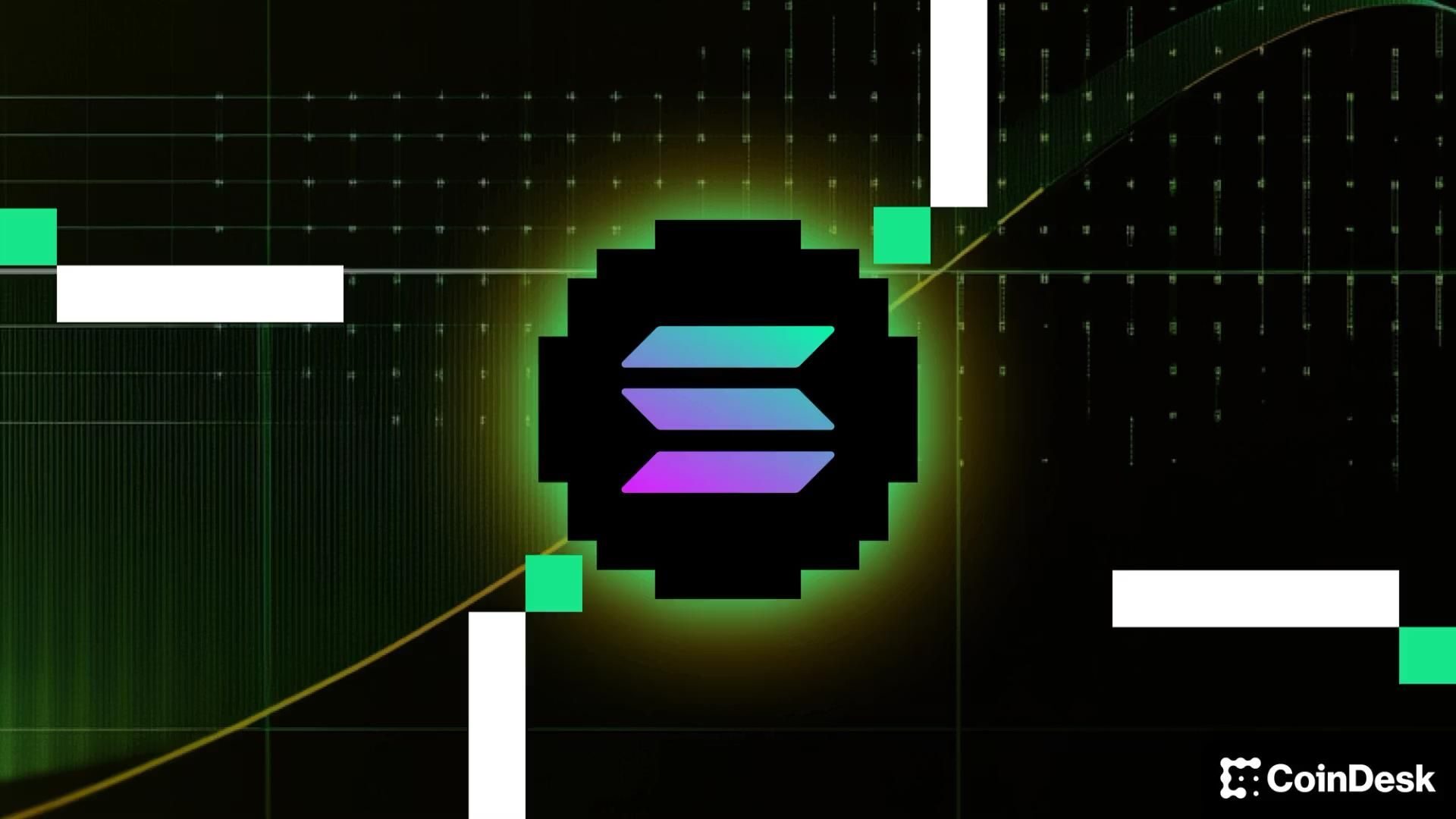Solana’s Marinade Labs CEO Eyes Lower Barrier to Entry for Validators After Alpenglow Upgrade
In a conversation with CoinDesk, Marinade Labs’ Michael Repetny gives an overview of the Solana staking ecosystem and the upcoming Alpenglow upgrade.
By Margaux Nijkerk|Edited by Jamie Crawley
Oct 26, 2025, 2:00 p.m.

As the Solana ecosystem is preparing for the upgrade to come at the end of this year or in early 2026, Repetny shares how he thinks this shift could expand validator participation and improve decentralization, even as higher hardware demands loom.
This interview has been edited for brevity and clarity.
Solana’s upcoming Alpenglow upgrade could mark a turning point for the network’s staking economy. CoinDesk sat down with Michael Repetny, CEO of Marinade Labs, the firm that supports Solana’s liquid staking protocol Marinade, to discuss how the update aims to change the economics of running a validator on Solana, significantly lowering the barrier to entry.
As the Solana ecosystem prepares for an upgrade at the end of this year or in early 2026, Repetny shares his thoughts on how this shift could expand validator participation and improve decentralization, even as higher hardware demands loom.
STORY CONTINUES BELOW
This interview has been edited for brevity and clarity.
CoinDesk: Talk to me about the state of Solana staking – what are the most pressing issues right now in this area, in your opinion?
Michael Repetny: So when we started Marinade, there were 700 validators on Solana, with 11 of them big enough to potentially halt the network.
Then we launched Marinade during the first few years, the number of validators grew to 2000 so it looked great. Right now we are below 1000 validators again active on Solana.
I think there are other signals [on the health of Solana staking]. Another way of looking at it is if you look at the concentration of the stake, which is, if you get one-third of that stake to shut down, Solana stops working.
It takes right now around 20 of the biggest violators to do that, or also it takes two countries and it takes two data centers right now. Those are like different ways to look at it. So, it is not ideal.
We would rather see hundreds of bad quality validators than thousands of them with people just running potatoes.
And with the ETFs and with institutional interest, I think that centralization is becoming a greater risk.
At Marinade, we’re trying to make sure that we have a viable option for validators to stake in a responsible way.
Solana has a major upgrade coming called Alpenglow. How will it affect the staking ecosystem?
We are hopeful, and it should impact the staking and validator economics. There is a proposed change to just cut down the vote fees for validators (vote fees are incurred by validators when they vote on processing SOL on the blockchain). So this is a huge one, because right now, if you want to run a validator, just to get it started, you need to pay about $5,000 a month.
Of those $5,000, about $4,000 is spent on just the voting fees. So as you can see, 80% of the cost today to spin up your validator is vote fees. Alpenglow aims to turn the vote fees to be much less. This is super exciting, and should make it much more accessible to start their own validator because the cost will go down
Will there be any changes to Solana validator rewards?
One way to look at it is to cut the cost of running a validator. Alpenglow is really about increasing the bandwidth and reducing latency.
We hope to see more saturated blocks when we pack them better, which should also improve the economics of the validators by packing the blocks.
Another benefit to that would be that if you increase the bandwidth and reduce the latency, then there is a shorter time for arbitrage and malicious maximum extractable value (MEV). This means if there’s less time to manipulate the ordering of the transactions, there’s going to be less toxic and malicious MEV happening, which is great for users.
Are there any tradeoffs for validators with Alpenglow?
Maybe eventually the hardware cost might go up. There may be a higher requirement on the end validators to make sure that they still keep up with the network, as there will be more transactions coming in. Maybe with the more requirements on them, there could be a trade-off. Other than that, I don’t know. There will be problems, but we have to see once we are there.
How does Alpenglow tie back to Marinade’s mission?
It makes it more accessible to spin up just more validators. The threshold for being break-even is way lower.
So Alpenglow is coming at the end of the year or maybe early next year – is this going to be a really big transformation or just another upgrade? And where does Solana head after that?
It’s one of the pieces that need to be sorted out for Solana to be and stay competitive with things like Hyperliquid or decentralized exchanges.
Solana is working on fixing the protocol with Alpenglow, fixing the infrastructure with new projects like DoubleZero, fixing the software clients and optimizing Firedancer. All those things, hopefully now, are all coming together.
A six-month timeframe might not be enough for the results to show, but once it’s out there, it’s hopefully going to unlock use cases that wouldn’t be available on Solana at present.
Hopefully, there will be more economic activity, which should translate to more revenue, and hopefully that pie grows.
Read more: Solana Set for Major Overhaul After 98% Votes to Approve Historic ‘Alpenglow’ Upgrade
More For You

Stablecoin payment volumes have grown to $19.4B year-to-date in 2025. OwlTing aims to capture this market by developing payment infrastructure that processes transactions in seconds for fractions of a cent.
More For You
Oct 23, 2025

Alongside, there’s the Ledger Wallet, a reimagined version of the company’s Ledger Live app, and Ledger Enterprise Multisig, a new platform for institutional asset management.
What to know:
- Ledger, the French firm known for its crypto hardware wallets, has launched a sweeping update to its product line, positioning itself for what it calls a new “era of ownership.”
- The company unveiled the Ledger Nano Gen5, a redesigned version of its signature device, along with Ledger Wallet, a reimagined version of its Ledger Live app, and Ledger Enterprise Multisig, a new platform for institutional asset management.
- Ledger now calls its device a “signer,” positioning the device as not only a venue for digital assets but also of digital identity in an AI-driven world.
-
Back to menu
Prices
-
Back to menu
-
Back to menu
Indices -
Back to menu
Research
-
Back to menu
Consensus 2026 -
Back to menu
Sponsored
-
Back to menu
Videos -
Back to menu
-
Back to menu
-
Back to menu
Webinars
Select Language









